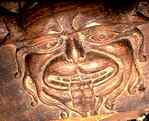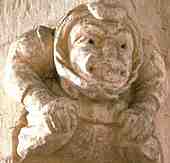From Sinclair 1969, p.9, a description of a 14th century psalter in the National Library of Australia, Canberra:
"Vellum, 228 x 148mm., A contemporary vellum +111. Collation:(6)1 (8)2-4 (2)5 (7)6 (8)7-15. Quire 6 lacks its third sheet. Catchwords agree, a few quire signatures, no foliation or pagination."
(1 x 6) + (3 x 8) + (1 x 2) + (1 x 7) + (9 x 8) = 111
So that adds up. Don't just believe me, check it on your pocket calculator. The fact that quire 6 lacks its third sheet explains why there is a gathering of 7 leaves and why the total number of folios is odd. When the book is made up as described previously the number of folios should be even. One must have gone missing, or the book assembled in a slightly peculiar way.
The fact that the catchwords agree, that is each catchword is the same as the first word on the next page, indicates that all the gatherings are present and in the right order, even though there are no folio or page numbers to validate this.
So really, there's nothing to it. It's just a simple shorthand code for describing how the book is put together.

From Manion and Vines 1984, p.132, a description of a Book of Hours in the National Library of Australia:
"Vellum, 195 x 140. A-B modern paper + 126 + C-D modern paper. I4 ,II2 ,III-IX8, X10, XI-XV8, XVI (wants 5), XVII (wants7). Catchwords agree. Folios 72v and 126v are blank."
So, the manuscript is written on vellum. The size is given. There are two flyleaves of modern paper, so the book has been rebound, 126 folios, and two leaves of modern paper at the end. However, the collation is done the opposite way to the previous example; the Roman numerals represent the numbers of the gatherings while the small Arabic numerals represent the number of leaves in each gathering. There are two folios missing, indicated by their place in the gathering. It all adds up in the same way.
(1 x 4) + (1 x 2) + (7 x 8) + (1 x 10) + (5 x 8) + (1 x 7) + (1 x 7) = 126
There are two pages with nothing written on them, but they are still given their folio numbers.

If you are looking at this page without frames, there is more information about medieval writing to be found by going to the home page (framed) or the site map (no frames).